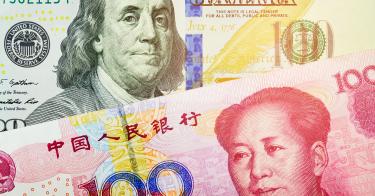This month, President Trump has tweeted his angst over the economic relationship between the United States and China. He did not like the way negotiations were heading and decided that the punitive tariff rate on $200 billion worth of imports from China should more than double from 10 percent to 25 percent. Now Beijing has announced it will retaliate by hiking its tariffs on $60 billion worth of exports from the United States.
The authority of the president to raise tariffs under Section 301 of the Trade Act of 1974 is debatable. But what is clear is that, in the absence of Congress stepping in to reassert its constitutional prerogatives over trade, or China agreeing to structural regulatory changes, the administration intends to continue to increase tariffs and apparently without limit. The president has threatened to place a tariff on everything Americans buy from China, which is precisely the impression he is hoping to give. The popular belief remains that these tariffs are simply a negotiating tactic.
Negotiating tactic or not, the solid commitment to tariffs shown by the administration is not going away. One hurdle to finalizing negotiations with China is how the two countries plan to enforce an agreement. The narrative most often heard on Capitol Hill is there is no deal with China without strong enforcement. The plan is for the administration to continue to use tariffs for this very purpose. Earlier this year, United States trade representative Robert Lighthizer had already given us a look at how the administration was thinking about enforcement. His proposal at the time was a three tied system of meetings, consultations, and punitive tariffs.
If an American company complained about any Chinese noncommercial activities, and Chinese officials were unable to make any changes after consultation with the United States trade representative, there would be punitive and reciprocal tariffs, which is essentially the process for Section 301, except without the regulatory procedures or legislative and public oversight. The fact that the executive branch can move within a week to apply tariffs is an example of not just the economic cost of these tactics on American businesses, but of why the current proposed enforcement mechanism for a Section 301 agreement with China is flawed as well.
The United States trade representative wants the same kind of power to apply punitive tariffs as part of the proposed enforcement mechanism with China, except without any indication of regulatory procedure, no public timeline to apply tariffs, and no public transparency. Because of all the White House trade practices, American importers and exporters have struggled to get ahead of these increases in tariffs, whether it is the tariffs on $250 billion worth of imports from China or tariffs on $110 billion worth of exports from the United States. Monthly imports and exports between the two countries indeed surged before each of the tariff hikes last year.
American businesses were more or less able to plan for these tariff hikes through the heads up that the United States trade representative would announce either through its website or through regulatory notice as a part of the Section 301 procedures. But Americans businesses are now at risk of receiving a shorter timeline, if given one at all, if the United States trade representative becomes the sole enforcer of a deal with China. Giving it this kind of unchecked executive power, like the president making tariff decisions at the last minute, would flout normal regulatory procedures.
It also could potentially violate Article X of the World Trade Organization, which is a rule that requires public disclosure before any tariffs changes are made to give companies time to make arrangements. Many studies show that using tariffs as a way to deal with China is costly, with no real effect in changing Chinese noncommercial activities, yet lawmakers in Washington continue to call for more tariffs. It is no surprise, however, given the rhetoric on trade has become more focused on increasing the cost of trade for the sake of reciprocity, instead of on the benefits of decreasing the cost of trade for American businesses or punishing the theft of intellectual property. The United States has other measures, like related nontariff sanctions, that it has been reluctant to use with China.
Instead, the administration continues to rely on aggressive negotiations and unchecked trade practices, while Congress shirks its constitutional obligations to regulate trade. Now the United States trade representative could be taking over more direct tariff power with little to no objection or oversight. Arguably, the whole approach the administration has taken with the economic relationship between the United States and China has been flawed. The actions taken this month further spotlight why the proposed enforcement mechanism for a trade agreement with China is also flawed.
This piece originally appeared in The Hill on 5/13/19



